Related Research Articles

Transport in Kyrgyzstan is severely constrained by the country's alpine topography. Roads have to snake up steep valleys, cross passes of 3,000 m (9,843 ft) altitude and more, and are subject to frequent mud slides and snow avalanches. Winter travel is close to impossible in many of the more remote and high-altitude regions. Additional problems are because many roads and railway lines built during the Soviet period are today intersected by international boundaries, requiring time-consuming border formalities to cross where they are not completely closed. The horse is still a much used transport option, especially in rural and inaccessible areas, as it does not depend on imported fuel. For transport in the Soviet Union, see Transport in the Soviet Union.
The Trans-Asian Railway (TAR) is a project to create an integrated freight railway network across Europe and Asia. The TAR is a project of the United Nations Economic and Social Commission for Asia and the Pacific (UNESCAP).

The Eurasian Land Bridge, sometimes called the New Silk Road, or Belt and Road Initiative is the rail transport route for moving freight and passengers overland between Pacific seaports in the Russian Far East and China and seaports in Europe. The route, a transcontinental railroad and rail land bridge, currently comprises the Trans-Siberian Railway, which runs through Russia and is sometimes called the Northern East-West Corridor, and the New Eurasian Land Bridge or Second Eurasian Continental Bridge, running through China and Kazakhstan. As of November 2007, about 1% of the $600 billion in goods shipped from Asia to Europe each year were delivered by inland transport routes.
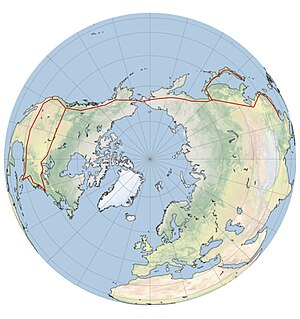
A Bering Strait crossing is a hypothetical bridge and/or tunnel spanning the relatively narrow and shallow Bering Strait between the Chukotka Peninsula in Russia and the Seward Peninsula in the U.S. state of Alaska. The bridge/tunnel would provide a connection linking North America and Eurasia.

Osh Region is a region (oblast) of Kyrgyzstan. Its capital is Osh. It is bounded by (clockwise) Jalal-Abad Region, Naryn Region, Xinjiang, China, Tajikistan, Batken Region, and Uzbekistan.
Kazakhstan Temir Zholy, also National Company Kazakhstan Temir Zholy, is the national railway company of Kazakhstan.
The Bottineau LRT is a proposed light rail line extension in the Minneapolis – Saint Paul Metro area, projected to run northwest from Target Field station in downtown Minneapolis along County Road 81 to Brooklyn Park. Construction of the line is scheduled to begin in 2020, with the line opening for service in 2024. However, the proposed alignment shares right-of-way with a freight corridor owned by the BNSF Railway, which has consistently opposed the plan. If built, Bottineau LRT would be the next light rail line in the Twin Cities after the Southwest LRT.
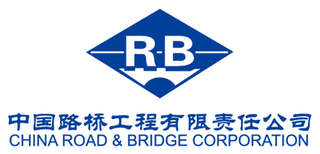
China Road and Bridge Corporation (CRBC), a subsidiary of Fortune Global 500 company China Communications Construction Company (CCCC), focuses on global civil engineering and construction projects such as highways, railways, bridges, ports, and tunnels. Growing out of the Foreign Aid Office of the Ministry of Communications of China, CRBC and its predecessors have been executing projects since 1958. In 1979, CRBC was formally established and entered the international contracting market. The parent entity, CCCC, was formed through the combination of CRBC and China Harbour Engineering Co Ltd (CHEC) in 2005.
The Delhi–Mumbai Industrial Corridor Project (DMIC) is a planned industrial development project between India's capital, Delhi and its financial hub, Mumbai. The DMIC project was launched in pursuance of an MOU signed between the Government of India and the Government of Japan in December 2006. It is one of the world's largest infrastructure projects with an estimated investment of US$90 billion and is planned as a high-tech industrial zone spread across six states, as well as Delhi, the national capital and itself a Union Territory. The investments will be spread across the 1,500 km long Western Dedicated Freight Corridor which will serve as the industrial corridor's transportation backbone.

As of 1996, China-Kyrgyzstan relations were an area of substantial uncertainty for the government in Bishkek. The free-trade zone in Naryn attracted large numbers of Chinese businesspeople, who came to dominate most of the republic's import and export of small goods. Most of this trade is in barter conducted by ethnic Kyrgyz or Kazakhs who are Chinese citizens. The Kyrgyzstani government had expressed alarm over the numbers of Chinese who were moving into Naryn and other parts of Kyrgyzstan, but no preventive measures had been taken as of 1996.

The New Eurasian Land Bridge, also called the Second or New Eurasian Continental Bridge, is the southern branch of the Eurasian Land Bridge rail links running through China. The Eurasian Land Bridge is the overland rail link between Asia and Europe.

The legacy of the Soviet Union lives on in the infrastructure of Central Asia. As it crumbles, or gets patched up, much of what was built in Central Asia is the backbone of the existing infrastructure for transportation, goods delivery and energy distribution. Much of the industrial infrastructure underwent precipitous decline in the 1990s, after the fall of the Soviet Union, especially in Kyrgyzstan and Tajikistan. The roads, railroads and energy lines are thus oriented towards the Russian Federation and away from other regional neighbors, such as China, Afghanistan or Iran.
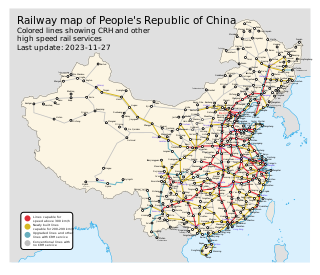
Rail transport is an important mode of long-distance transportation in the People's Republic of China. As of 2015, the country has 121,000 km (75,186 mi) of railways, the second longest network in the world. By the end of 2018, China had 29,000 kilometres of high-speed rail (HSR), the longest HSR network in the world.[4]
China–Pakistan Economic Corridor is a collection of infrastructure projects that are currently under construction throughout Pakistan. Originally valued at $46 billion, the value of CPEC projects is worth $62 billion as of 2017. CPEC is intended to rapidly upgrade Pakistan's required infrastructure and strengthen its economy by the construction of modern transportation networks, numerous energy projects, and special economic zones. On 13 November 2016, CPEC became partly operational when Chinese cargo was transported overland to Gwadar Port for onward maritime shipment to Africa and West Asia, while some major power projects were commissioned by late 2017.
The Belt and Road Initiative (BRI) is a global development strategy adopted by the Chinese government involving infrastructure development and investments in 152 countries and international organizations in Asia, Europe, Africa, the Middle East, and the Americas.
The Belt and Road Forum for International Cooperation is an international political and economical forum.
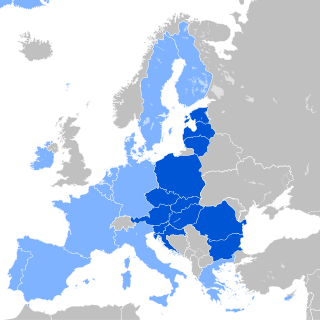
The Three Seas Initiative , also known as the Baltic, Adriatic, Black Sea (BABS) Initiative, is a forum of twelve states in the European Union, located in Central and Eastern Europe. The combined area connects the Adriatic Sea, Baltic Sea, and Black Sea. The initiative aims to create a regional dialogue on a variety of questions affecting the member states. The twelve members met for their first summit in 2016, in Dubrovnik.
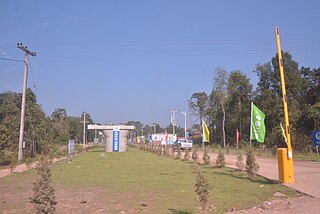
The Vientiane–Boten Railway is a 1,435 mmstandard gauge railway that runs for 414 kilometres (257 mi) in northern Laos, between the capital Vientiane and Boten on the border with China. It will be connected to Chinese rail system by Yuxi–Mohan railway. It will be majority-owned by China, financed by Chinese funds, and built by China Railway Group.
Debt-trap diplomacy is a type of diplomacy based on debt carried out in the bilateral relations between countries. It involves one creditor country intentionally extending excessive credit to another debtor country with the alleged intention of extracting economic or political concessions from the debtor country when it becomes unable to honor its debt obligations. The conditions of the loans are often not made public and the loaned money is typically used to pay contractors from the creditor country.
The Two Corridors, One Belt is a connectivity initiative involving Vietnam and China. It is a part of the Belt and Road Initiative, a Chinese global development initiative fostering connectivity especially across Eurasia.
References
- ↑ Aneja, Atul (June 22, 2019). "The Central Asian nodes in Belt and Road project". The Hindu.
- 1 2 3 Shi, Hao (June 15, 2019). "China-built road facilitates transportation in Kyrgyzstan". Xinhua.
- ↑ "Joint Communique of the Leaders' Roundtable of the 2nd Belt and Road Forum for International Cooperation". Ministry of Foreign Affairs of the People's Republic of China.
- 1 2 "Kyrgyzstan asks China for grant instead of loan". eurasianet. February 28, 2019.
- ↑ Zasiadko, Mykola (April 11, 2019). "From China to Iran via Kyrgyzstan: is the faster rail link real?". RailFreight.com.
